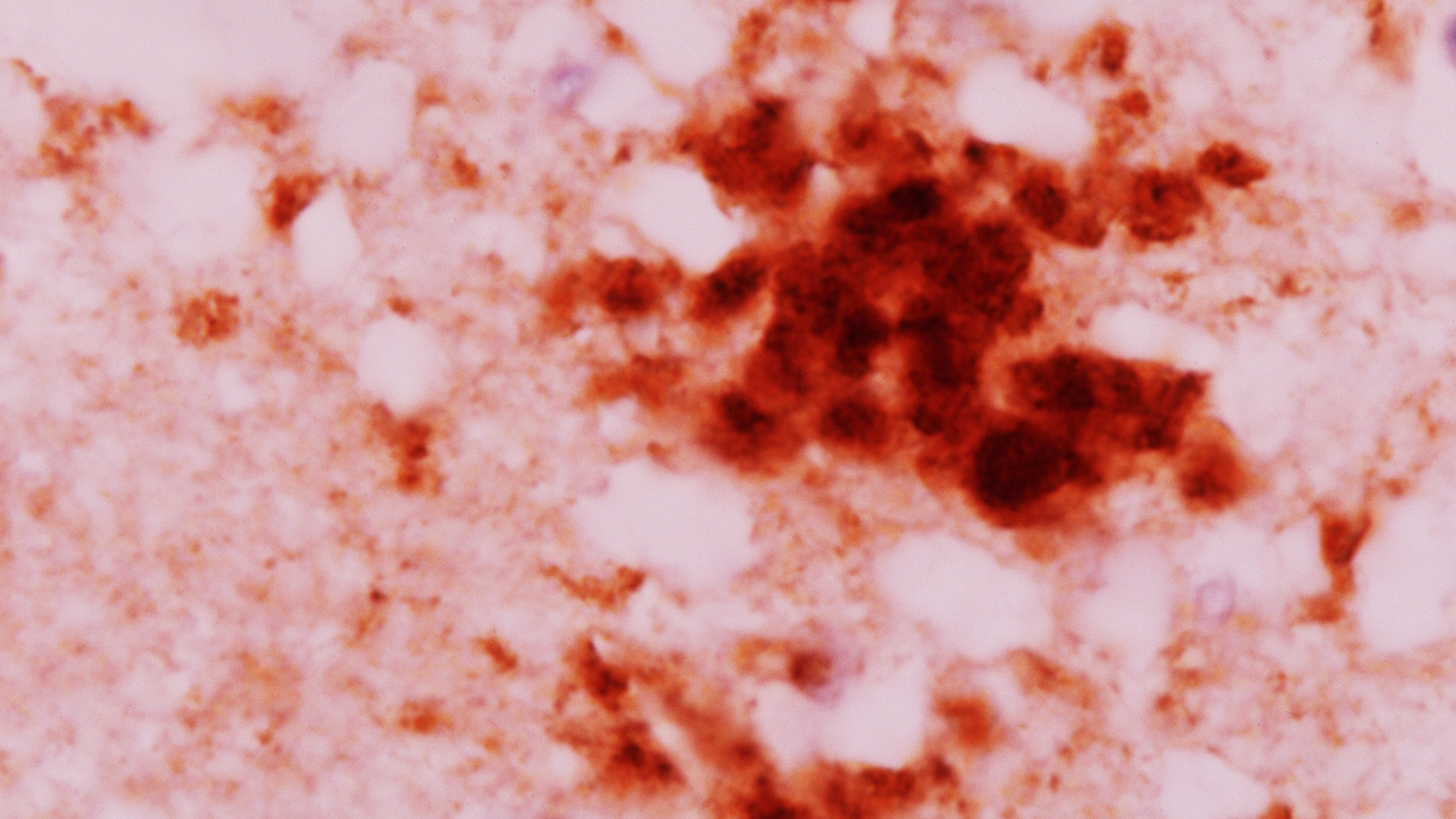Disease name: Creutzfeldt-Jakob disease (CJD), named after Hans Creutzfeldt and Alfons Jakob, two German doctors who first described the disease in the 1920s.
Affected populations: CJD affects around 1 in a million people worldwide each year. In the U.S., approximately 350 cases of CJD are diagnosed annually. Males and females are equally likely to develop the disease.
Causes: CJD is caused by abnormal proteins in the brain known as “prions.” These prions cause irreversible damage to tissues, leading to the formation of sponge-like holes throughout the brain that cause neurons to malfunction and die. Prions spark a chain reaction, prompting other, normal proteins in the brain to misfold. This perpetuates the condition and causes patients to experience progressively worse issues with movement and mental function.
Related: Lab tech develops fatal brain condition after accident with ‘mad cow disease’ samples
Three main types of CJD exist, which differ depending on how the prions originate in the brain. The most common of these forms is “sporadic CJD,” which accounts for around 85% of cases. Sporadic CJD occurs when normal proteins spontaneously misfold and become prions for unknown reasons, with symptoms usually first developing in adults who are between 45 and 75 years old.
Additionally, between 10% and 15% of cases of CJD are caused by a mutation in a gene called PRNP, which leads to the development of prions. This genetic form of CJD is inherited in an autosomal dominant manner, meaning that a child only needs to inherit one copy of the faulty gene from either parent to develop the condition. Genetic CJD most often occurs in people between ages 30 and 50.
Fewer than 1% of CJD cases are “infectious,” meaning they are triggered by the transmission of prions from external sources. One way this can happen is when people eat beef from cows that have bovine spongiform encephalopathy, better known as “mad cow disease.” The U.S. has had strict regulations in place since the 1990s to prevent this from happening. Since the 1996 discovery that people could get CJD from “mad cows,” only 233 such cases have been reported worldwide.

Another way CJD can be transmitted is when it’s accidentally passed from human to human during medical procedures — for instance, if a patient receives a transplant or blood transfusion from a donor with CJD. A prominent example of this happened from the late 1950s to 1985, when doctors gave patients contaminated growth hormones derived from corpses. This led to at least 226 cases of CJD worldwide, including 29 cases in the U.S.
Symptoms: Common symptoms of CJD include dementia, confusion and disorientation, hallucinations, lack of coordination and muscle stiffness. Patients may also experience personality changes, sleepiness, seizures and issues speaking. They can additionally have psychological symptoms, such as severe depression, anxiety and irritability.
Symptoms of CJD often quickly progress to the point where patients become completely bedridden, unaware of their surroundings and unable to communicate with those around them. CJD is always fatal, and approximately 70% of patients die within a year of diagnosis, most often because of an infection, heart or lung failure.
Treatments: There is no cure for CJD, but drugs can help alleviate a patient’s symptoms. For instance, patients may be prescribed medications to reduce muscle jerking or to alleviate anxiety.
Early diagnosis of the genetic form of CJD can help patients by enabling them to make arrangements for end of life care and family planning.
This article is for informational purposes only and is not meant to offer medical advice.
